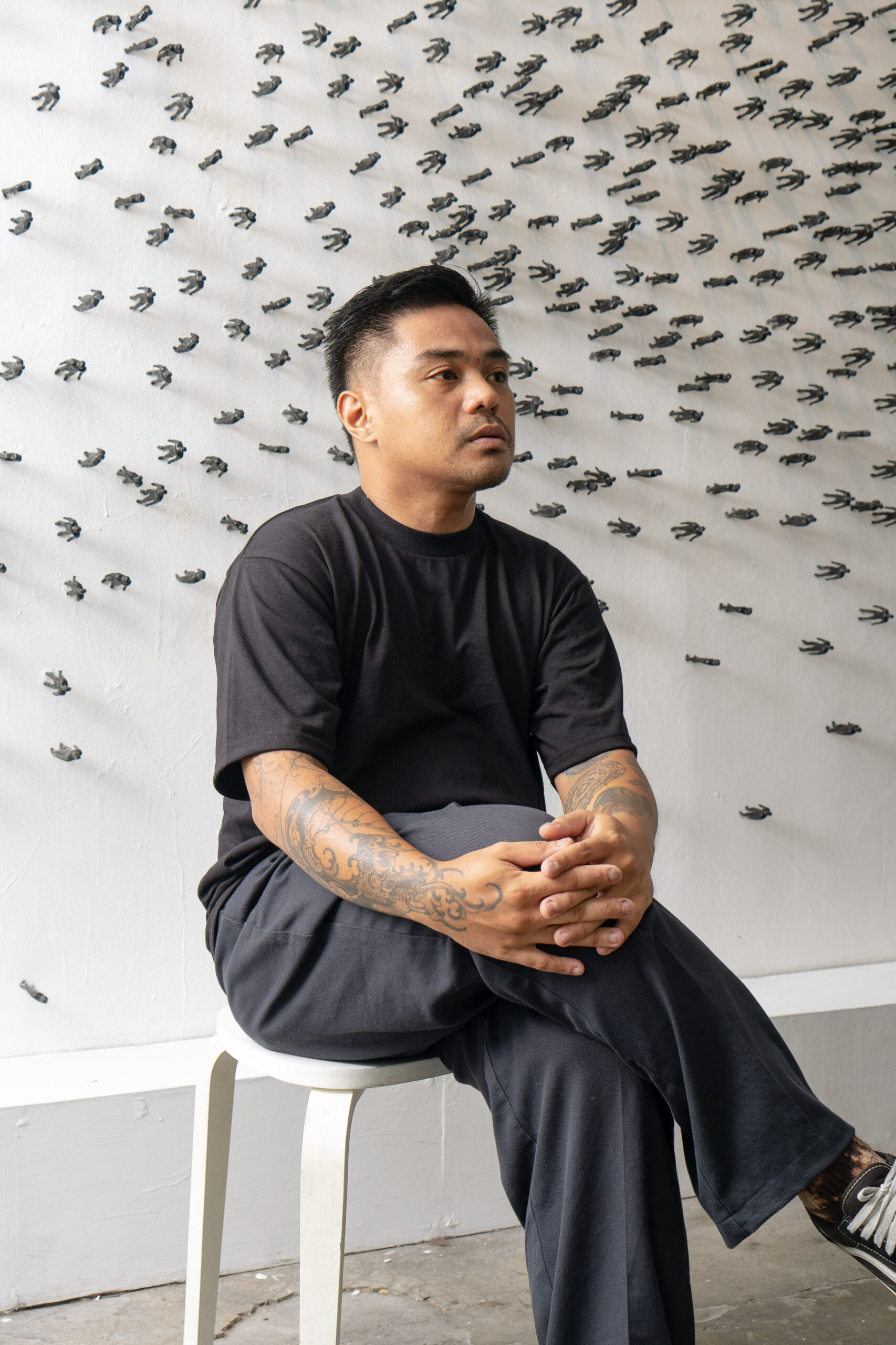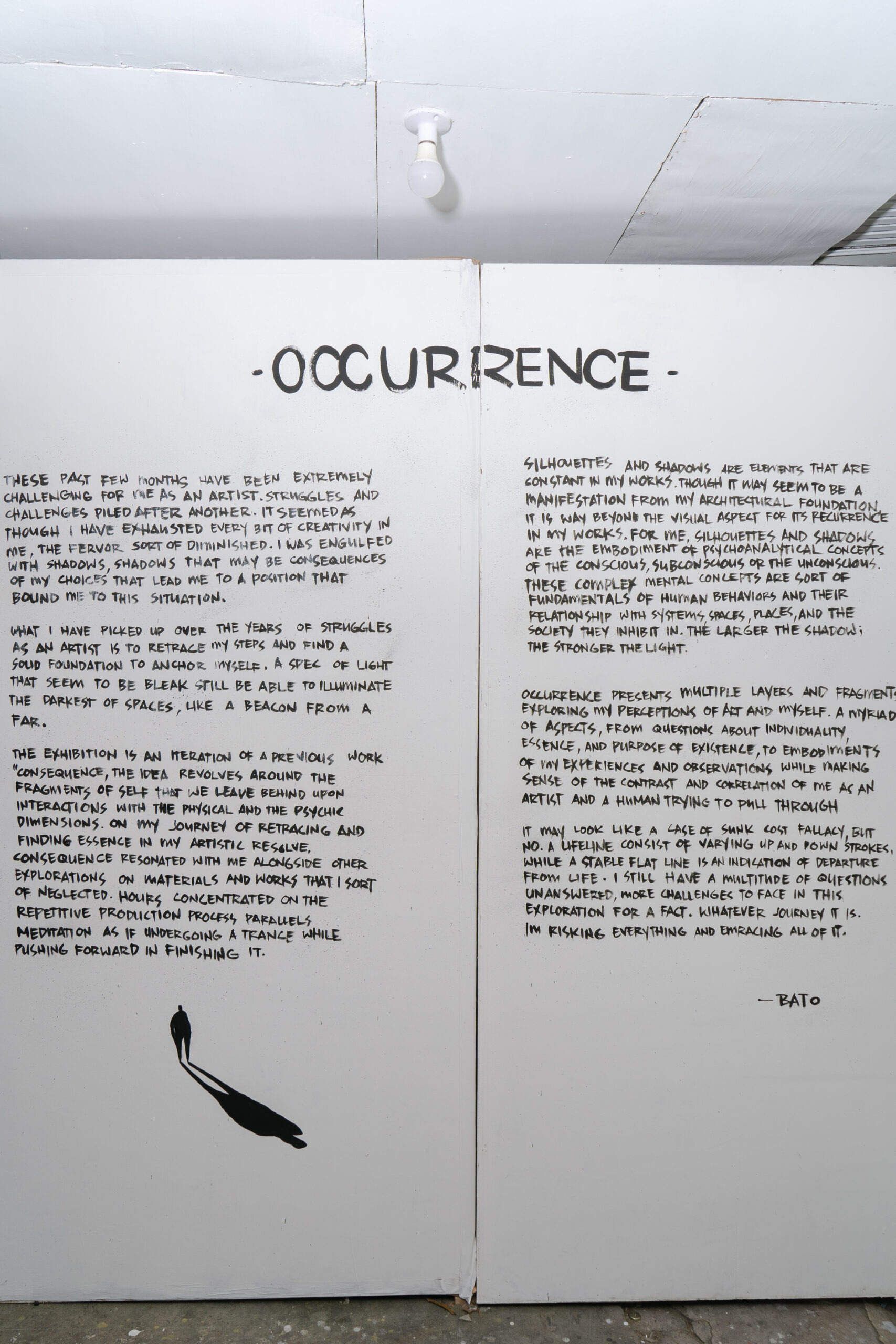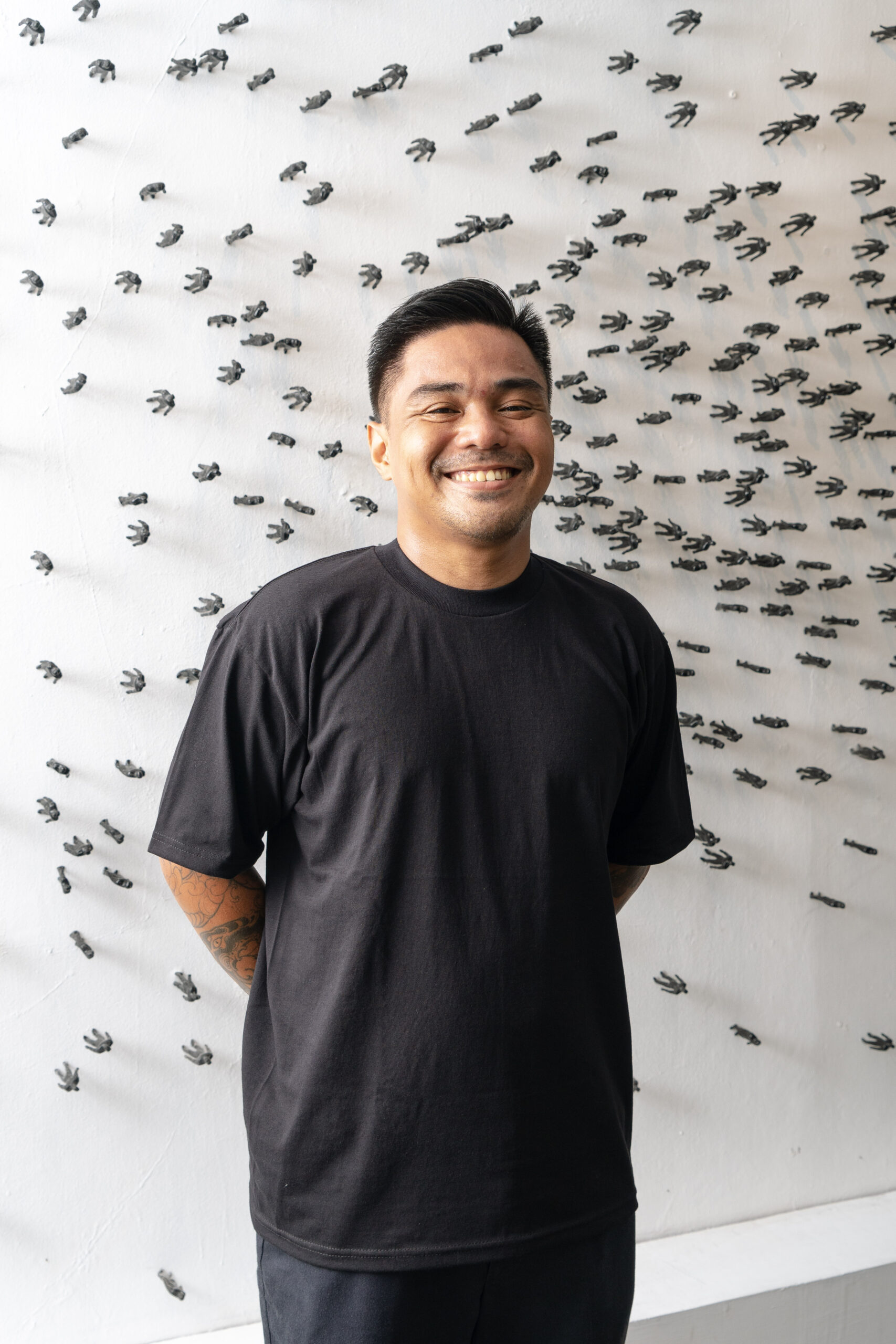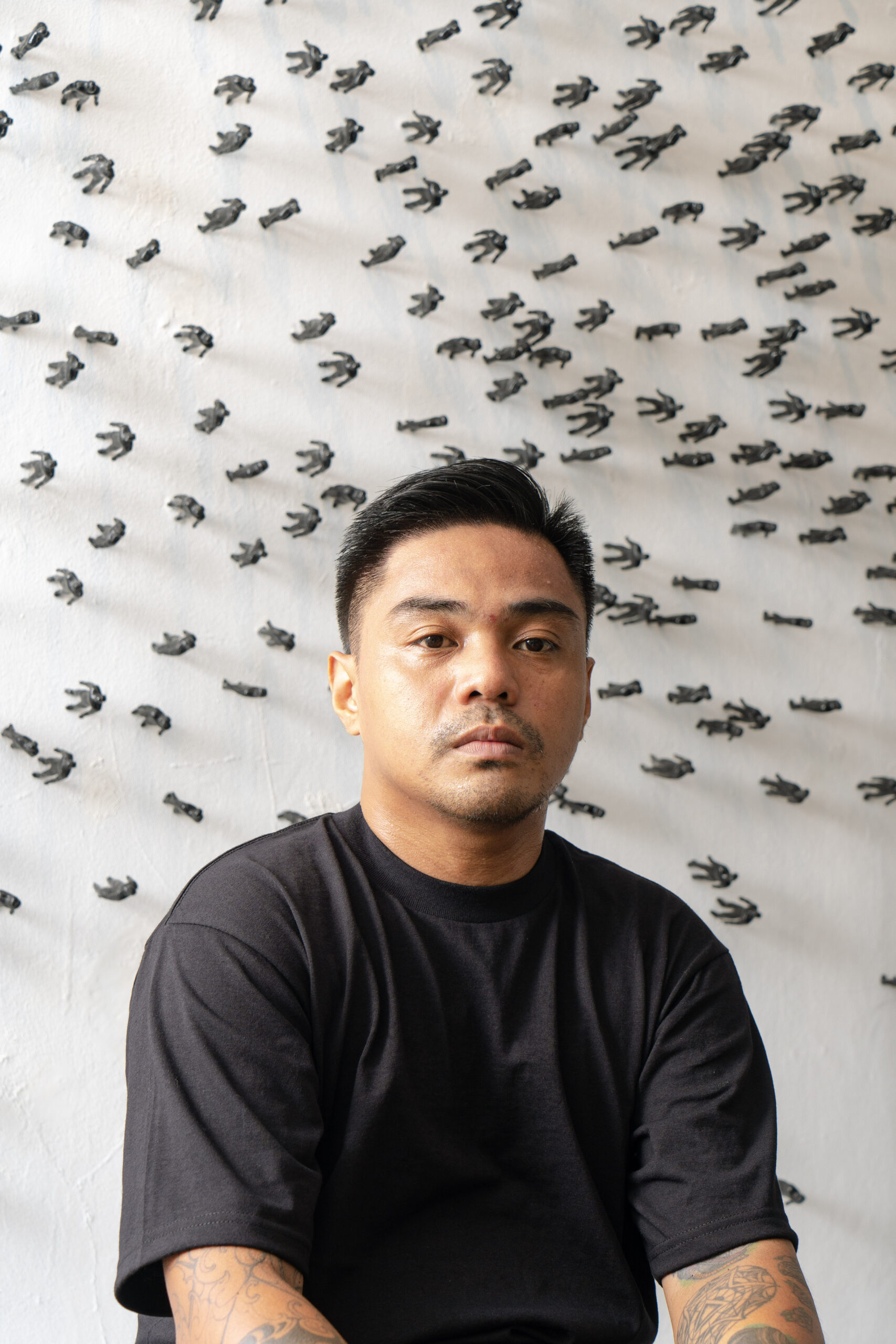Graffiti artist Dennis Bato sheds light on what differentiates graffiti and street art from vandalism
Expression is the purpose of art regardless of its form. Each work is distinct and personal, crafted from experiences no one else holds. Art in its truest sense cannot be limited yet in practice, it often is. Be it for monetary gain or for the sake of satiating a mistaken desire for approval, we find ourselves at the mercy of imagined rules and conventions that dictate to us what art should be. And at the expense of many, these fabricated norms have deprived talented and competent artists of their hard-earned recognition and respect.
Graffiti and street artists have seen the worst of it – having faced not only disapproval from a community they see themselves as a part of, but hunted by the law itself. For Dennis Bato, It’s only fitting that the art form be finally awarded the legitimacy it deserves.
Bato (b. 1989) is a graffiti artist whose work is inspired by his personal experiences and observations on human behavior. He received his Bachelor’s degree of Science in Architecture from the Far Eastern University and is also in the process of earning his Master’s degree in Fine Arts at the University of the Philippines, Diliman. He is currently based in Baraks, an artist-run space that holds talks, film screenings, and exhibitions.
Unbounded by medium or method, Bato’s art constantly pushes the boundaries of material exploration. He uses the skills and techniques he acquired as a graffiti and street artist, and architect, seamlessly incorporating the differing disciplines into works that follow yet aren’t bound to aesthetic norms and principles. Silhouettes and shadows are a constant in Bato’s work. These represent one’s alter-ego – the shadow we cast symbolizes our other self – our secondary identity that exists outside of our everyday lives. For him, it is reminiscent of the multiple lives that he leads; one that resides on the streets, the other within the gallery.
In an exclusive interview with Lifestyle.INQ, we sit down with the artist as he discusses his journey towards art, differentiating what we know as “vandalism” from graffiti and street art. In our lengthy conversation, he redefines preconceived notions against the art form – successfully overturning assumptions I admit I carried myself – revelations that deserve sharing.

Art as an irresistible calling
Bato initially sought to take up Fine Arts for his undergraduate studies. Unfortunately, he was denied the opportunity due to the long-standing and now obsolete belief his parents held that there was no money to be found in art. This prompted him to take up Architecture instead. He considered it an acceptable substitute, a discipline related to what he had wanted in the first place. However, he later learned that they were starkly different from one another. Architecture according to him, and understandably so, was “bound by laws, rules, and regulations.”
Feeling stifled and constricted, he was drawn to the freedom graffiti and street art offered. He was enticed by “The freedom that it provides, to create, curate, and arrange to make something that isn’t bound by standards of what it ought to be.”
Vandalism served as his gateway into art and he would hit the streets, joining “nightly missions” as he calls them. After some time, he managed to get connected to other artists in the scene. Through them, he gained access to several group exhibitions that led to securing his first major show under Vinyl on Vinyl – effectively kicking off a full-time career in art.

It wasn’t a simple decision. After all, his career was heading in an entirely different direction. He shared, “Sinubukan ko naman siyang mahalin. Kumuha ako ng trabaho sa arkitektura pagkatapos ko, pero kumbaga, mas nagbigay talaga ng kasiyahan ‘yung paggawa ko ng art. Bagaman risky, kasi ‘di ko naman siya inaral – nagrisk lang talaga ako na mag-full time” [I tried loving it. I took on architectural jobs after I graduated, but creating art was what truly gave me satisfaction. It was risky, after all, I didn’t study it – I simply took the risk to go full-time].
“Sinubukan ko naman siyang mahalin. Kumuha ako ng trabaho sa arkitektura pagkatapos ko, pero kumbaga, mas nagbigay talaga ng kasiyahan ‘yung paggawa ko ng art. Bagaman risky, kasi ‘di ko naman siya inaral – nagrisk lang talaga ako na mag-full time.”
Bato explained that he has two different art practices: one within the gallery setting, where he “explores meanings and contexts” through his work; the other, outside and on the streets which he continues to practice to this day. And while differing in medium and approach, he asserted, “Ito ay nakaugat pa din sa pagkawili ko sa espasyo, ang relasyon nito sa ating lipunan at tayo bilang tao – paano tayo namumuhay dito“ [They are rooted in my interest in space, its relationship with our society and ourselves as people, and how we live in these spaces].
An intersection of separate experiences, he adds that the idea of encroaching upon and taking over a space through his craft was given to him not only by graffiti and street art but also by his foundation in architecture.

A split practice
He emphasizes that the clear line separating his two practices lie in the freedom each provides. Within the gallery, artists are bound by specific mediums, platforms, approaches, and aesthetic norms. Graffiti and street art on the other hand, only by culture and respect. He elaborated:
“Malaya ka gumawa ng kahit ano, pero meron ding mga pamantayan na dapat mo sundan. Kailangan mong rumespeto sa espasyo at kailangan mo rumespeto sa nauna sayo. At kung magpapatong ka ng gawa sa isang pader, dapat siguraduhin mo na mas maganda pa ito sa nauna” [You’re free to create anything, but there are rules that you have to follow. You have to respect the space and you have to respect the one that came before you. And if you were to add your work onto a wall, you have to make sure that it’s better than the one prior].
And beyond canvases and bare walls, Bato has also ventured out to create installations and sculptures – one being a work titled ‘Alab ng Puso.’

Explaining how he encountered these other mediums, he shared, “Siguro galing yun sa interes ko sa pagtatayo at materyales dahil sa arkitektura. At kahit ayoko yung arkitektura, lumalabas pa rin siya sa paggawa ko dahil gusto kong lumayo sa tradisyunal na canvas, at makita yung mga posibleng alternatibo na pwede ko magamit” [It probably comes from my interest in construction and materials due to architecture. And even if I dislike the architecture practice, it comes out in my artmaking because I want to go beyond the traditional canvas, and discover the possible material explorations and alternatives that I can use].
He did add that the use of spray paint is something that he consistently incorporates into his work regardless of medium.
Vandalism vs. art
There is undeniably a stigma surrounding graffiti and street art – a long-standing preconception that the art form equates to vandalism. More often than not, it is a self-inflicted wound. Vandalism is associated with sights of scribbles and vulgar words cluttering otherwise pleasant-looking buildings. But with an artist of the caliber of Bato who proudly refers to himself as a graffiti artist, it stands to reason that the creative discipline goes beyond the unstylistic messes we’ve become used to seeing.
Seeking to dispel these preconceived notions, Bato explains what separates it from blatant vandalism. For him, there are four major classes in that ecosystem; the graffiti writer, the street artist, the graffiti artist, and the vandal.
According to Bato, Graffiti writers are the train and the wall bombers. They aim to leave a mark, a name on the space they worked at to showcase how they defeated the system. To contrast, street artists are allegedly typically trained in the fine arts and are exploring different techniques and approaches to art. They deal with characters, murals, and commission-based works. Graffiti artists on the other hand are a combination of the two – street artists that are capable of creating both characters and letters.
Lastly, a vandal is characterized by their intention – the graffiti name game as he describes. He claims that a vandal aims to spread their name by painting on what he calls “heaven spots,” hard-to-reach areas such as billboards atop buildings. Treating it as if it were a sport, the goal is to leave others in awe.

As for his own intentions with his craft, Bato recalls a talk he once visited featuring Futura 2000, an acclaimed American graffiti artist. Someone asked him concerning what he thought about once-vandals who transitioned from the streets to gallery shows and exhibitions. Futura 2000 had said, “If you really love your craft or your art, you will do everything to level up. So in the case of graffiti and street artists, they’ve found the next level where they can bring their work. Mounting exhibitions and exploring the possibilities of what an artist can reproduce based on their foundation as a graffiti and street artist.”
Bato, sharing his perspective on the matter, adds “Nanggaling rin ako sa vandal, doon ko nakita na ‘di ko pwede itanggi at hindi ko itinanggi na nanggaling ako doon kase malaking parte siya ng disiplina ko” [I came from being a vandal, and from that experience I saw that I can’t and won’t deny that I came from it, because it is a huge part of my art practice].
“Nanggaling rin ako sa vandal, doon ko nakita na ‘di ko pwede itanggi at hindi ko itinanggi na nanggaling ako doon kase malaking parte siya ng disiplina ko”
Growing widespread acceptance
Having been in the scene for quite some time now, Bato observes that there seems to be growing acceptance for the art form.
He shared, “Dati, sobrang hirap makahanap ng mga kolaborasyon at proyekto kasamang ng mga brands. Kumbaga, siguro ilang dekada na ang nakaraan, para magkaroon ka ng isang proyekto kasama nila bilang isang graffiti at street artist, parang kailangan mo pumasok sa butas ng karayom – hindi nila ito tinuring bilang isang lehitimong anyo ng sining” [Before, it was so difficult to find collaborations and projects with brands. Probably around a decade ago, to find a project with them as a graffiti and street artist, you would have to go through the eye of a needle – they didn’t consider it a legitimate art form].
Even traditional artists, Bato describes, use graffiti and street art elements – drips and splatters – highlighting the convergence of differing art practices and elements.

Small victories are victories nonetheless, but there’s much to be done.
Bato hopes for the day that graffiti and street art will come to be acknowledged as a legitimate part of Philippine art history. And because nothing has been recorded or researched, he wishes to someday write about it and usher in that era himself. He explains that he was inspired by the Mabini Art Movement which he describes wasn’t considered a legitimate art movement early on because of its commercial nature.
And why shouldn’t it, after all, our city walls may even tell us more than the history books themselves. In our cities, hidden in plain sight, are hundreds if not thousands of unadulterated and uncurated journals. These hold the stories of countless individuals who have chosen to leave the fruits of their reflections for the public to see.

For Bato, “Ang graffiti at street art ay sumisimbulo sa lipunan natin – kumbaga parang tattoo siya ng mga siyudad natin. Halimbawa, para sa isang graffiti street artist, sa pamamagitan ng kanyang obra, ay makikita mo ‘yung ebolusyon at istorya niya” [Graffiti and street art acts as a reflection of our society – like a tattoo of our cities. For example, for a graffiti street artist, through their work, you will see both their evolution and their story].
“Ang graffiti at street art ay sumisimbulo sa lipunan natin – kumbaga parang tattoo siya ng mga siyudad natin. Halimbawa, para sa isang graffiti street artist, sa pamamagitan ng kanyang obra, ay makikita mo ‘yung ebolusyon at istorya niya”
Dennis Bato
He recently concluded his solo show ‘Occurrence.’ He explains the exhibit, “presents multiple layers and fragments exploring my perceptions of art and myself – a myriad of aspects, from questions about individuality, essence, and purpose of existence, to embodiments of my experiences and observations.” All the while, “making sense of the contrast and correlation of me as an artist and a human trying to pull through,” Bato shared via Instagram.
Bato will be taking part in MOCAF (the Modern and Contemporary Art Festival) under Vinyl on Vinyl from July 28 to 30, 2023. He will also be joining the group exhibition ‘Blank Slate,’ curated by Empty Scholar at Kondwi in two exhibition phases, opening on July 22, and August 5, respectively. The artist is set to mount a much-awaited solo exhibition at Vinyl on Vinyl on August 15.

—
Photography by JT Fernandez
Video by Colleen Cosme and JT Fernandez
Produced by Carl Martin Agustin










































